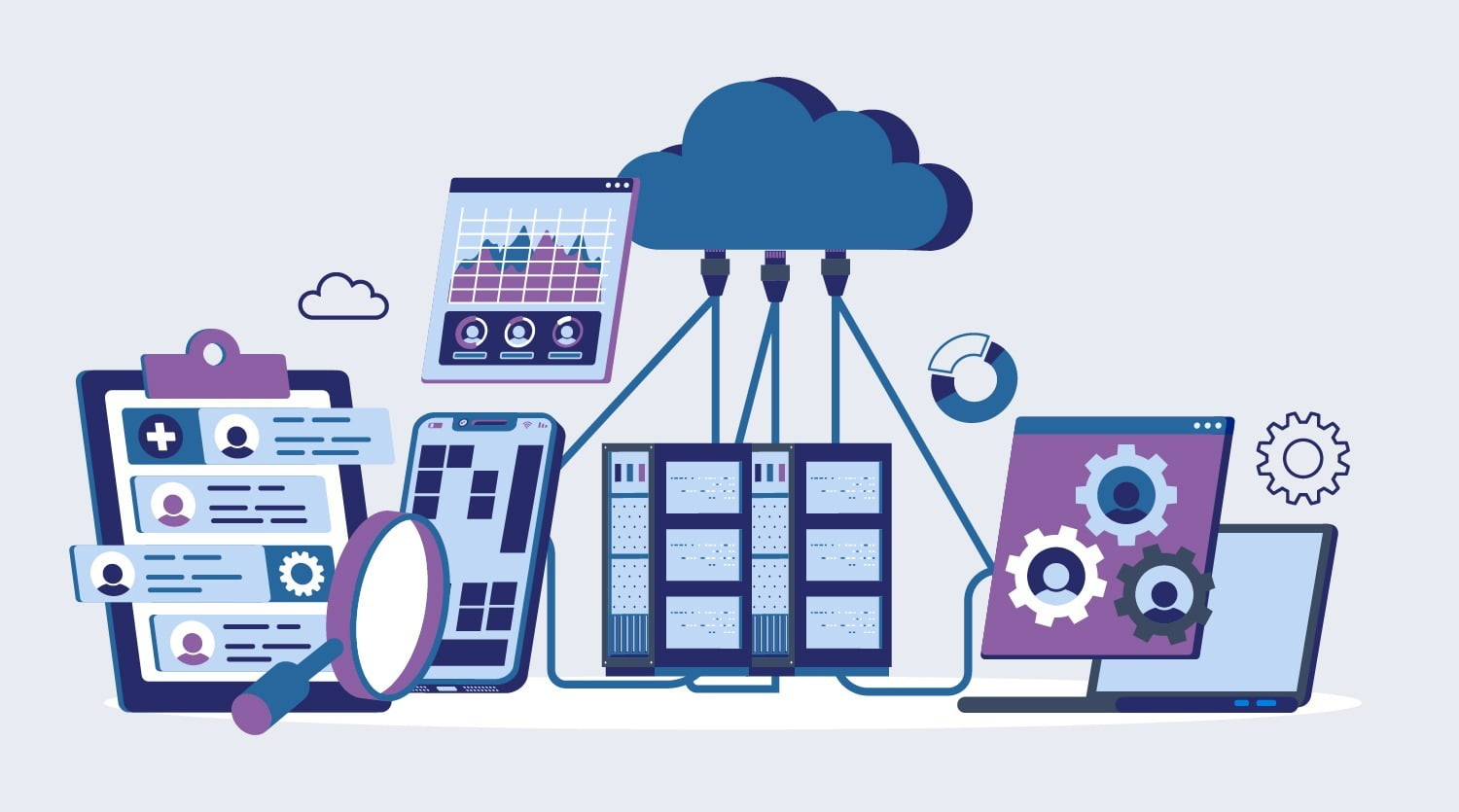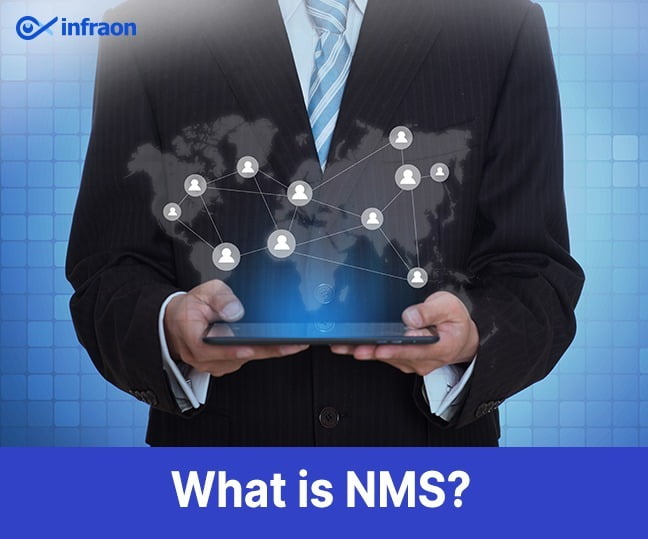A Network Monitoring System (NMS) is an indispensable tool for IT personnel and network administrators to manage, monitor, and fix critical issues that may arise on a sophisticated computer network. It provides clear visibility into the current state of one’s network environment, allowing administrators to take appropriate actions whenever necessary.
An NMS constantly monitors a system’s performance, including availability, operation reliability, traffic usage, protection status, and other characteristics vital to ensuring the health of a network. This data can be used to alert users and administrators when certain thresholds are exceeded or if certain events occur; it can even automate corrective tasks in some cases, reducing frustrations caused by unexpected outages or errors.
Related article: What is Network Performance Monitoring?
In short, an NMS is a comprehensive tool that enhances users’ end-to-end IT monitoring experience, providing peace of mind and better control over a business’s IT infrastructure.
What are the benefits of a network monitoring system(NMS)?
Here are some of the benefits of a network fault monitoring system that you need to be aware of.
Fix issues faster
Implementing a network monitoring system can provide invaluable benefits to businesses of all sizes. By regularly tracking the performance and behavioral analytics of the network infrastructure, organizations can easily detect any potential issues before they become major problems and take proactive steps to address them. Network monitoring systems include real-time alerts that notify administrators as soon as problems are detected, allowing for rapid diagnosis and resolution.
Manage to grow and change networks
Network monitoring systems allow for the tracking of all hardware, applications, and services on a given network and can apply statistics-based analysis to better understand where any weaknesses lie. This helps ensure that businesses can automatically scale their networks in real-time according to the current needs of their operations.
Identify security threats
Network monitoring systems are invaluable for preventing and detecting cyber attacks. As organizations become increasingly reliant on technology, a robust network monitoring system can provide necessary insight into the organization’s security standing. Besides getting real-time updates on changes to the IT landscape, these systems can detect suspicious activities that might signal future security threats.
How does network monitoring work?
Let’s next delve into the details of the working of a network monitoring system.
Discover Connected Devices
A network monitoring system is a powerful tool that can be used to detect and maintain connected devices in a network. Through its use, vital information about hardware and software performance can be accessed, such as logging errors or identifying security threats.
By sending out probes and other signals through the network, an event management software actively looks for traffic patterns associated with any connected devices. This ensures that the entire system is running optimally and reduces the chances of critical failures occurring in the future.
Examine the Network
A network monitoring system is an important tool used to identify failure points in a network. It does this by continuously examining the entire system for any inconsistencies and documenting them for analysis. This data can then be used to help detect problems before they become serious issues and take corrective action accordingly.
Inform network administrators of any issues
A network monitoring system is an essential tool for network administrators in a modern organization. It enables them to stay one step ahead of potential IT issues by providing an overview of the health of the whole network, which can then be responded to as soon as any issues arise. The information provided by the system helps administrators to cut down on troubleshooting time while minimizing downtime and disruption to the company’s operations.

Importance of Network Management
Here are some important pointers for maintaining a competent network management system.
Minimizes Costly Network Disruptions
A network monitoring system is a valuable tool for any organization looking to keep its networks running efficiently and cost-effectively. With reports generated from the monitoring system, IT teams have access to actionable insights that help improve network performance and uptime, ultimately keeping network disruptions at a minimum for maximum cost savings.
Improved Productivity
With continuous real-time monitoring, issues can be quickly identified and resolved, allowing employees to focus their efforts on productive endeavors. In addition to improved stability and security of operations, a network monitoring system can help improve productivity by allowing organizations to troubleshoot problems before they impact user experience, therefore reducing downtime that would otherwise lead to stalled projects or missed deadlines.
Improved Network Security
The implementation of a network monitoring system can greatly improve the security of any corporate network. This monitoring system helps IT teams instantly detect any malicious activities on the network, allowing them to take immediate action and reduce the risk of data breaches or other cyber threats.
Further, it allows administrators to analyze suspicious patterns of traffic on the network to more quickly identify potential sources of trouble before they can cause significant harm.
Why Is Network Monitoring Important?
Network monitoring is important in the modern business world. Keeping a close eye on all components of a system helps to identify problems quickly before they can cause extensive damage, resulting in reduced costs and improved efficiency. Proactive network management alerts you to flaws in the system so that you can take easy steps to solve them before major issues arise.
Furthermore, with detailed reports, IT staff can detect suspicious behavior faster and respond more efficiently. In addition, data gathered from real-time analysis of network traffic allows for accurate planning and forecasting for future projects.
Related article: Types of Network Performance Monitoring Tools
Conclusion
Network monitoring is important for multiple reasons: it can track usage, gather data for analytics, detect issues early on, identify performance bottlenecks, and even prevent outages. By leveraging a network monitoring system, you can stay ahead of any potential problems and keep your business running smoothly. Do you have a network monitoring strategy in place? If not, now might be the time to invest in one.



















